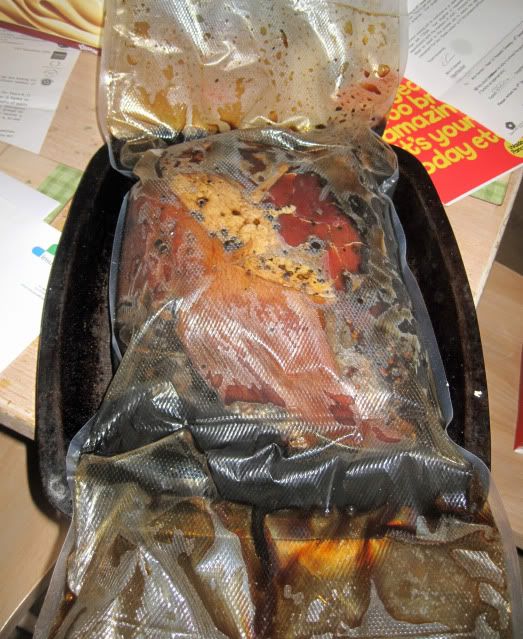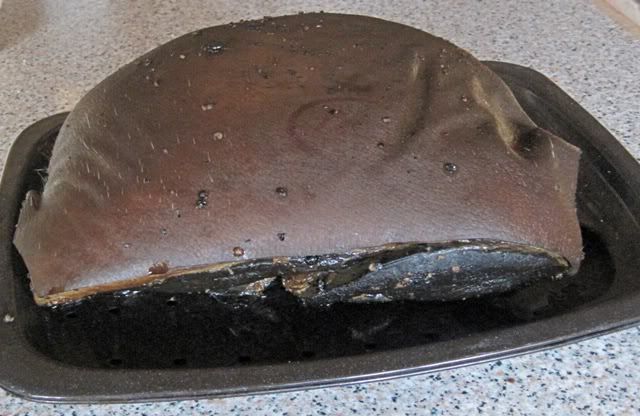Andreas wrote:That schinken looks absolutely amazing, so amazing infact that I think I will try making a Suffolk/Schinken fusion instead of a parma style ham!



Andreas wrote:So I have even more questions if you dont mind.
I will try and answer them to the best of my ability, if at all something dose not sound right ....... or I am not explaining to the best of my ability please let me know.
Andreas wrote:Should I cure it in salt for the same amount of time as the Suffolk ham, I.E 3 days per inch?
No as these two hams are totally different, the Suffolk has a bone in it which is the reason for the 3 days per inch, for the cure to reach the centre. Think of doing a prosciutto as this has the bone in, the difference between the Suffolk and prosciutto is that you are drying/aging the prosciutto for a minimum of nine months and the Suffolk is aged for six to eight weeks again it is all down to the weather/humidity and you will be cooking this ham.
The Schinken is boneless which cuts down the curing time; the whole pork leg is taken apart by the seams so that we end up with four pieces and less thicker pieces of pork for curing. Hope this make sense.
I tried to get a Sow leg in on my pork delivery tomorrow but I was informed later today by my supplier that all Sow legs had been boned out so has been reordered for delivery next Tuesday. If you wait until then I will bone the leg out in stages to show the cutting/seaming lines, if you take it slow it is really simple

Andreas wrote:And when you cure the meat in the brine, do you replace after a few days? If I cure a ham of 5 kg that means 15 days in the brine. Will it stay fresh for that long?
The brine is there for the length of time that the meat is in it use once and throw away, do not reuse. I do know that there will be people who will disagree with the no reuse brine deal, but until you have been making and using brines for some time it is not worth it. Both of these brines are a cooked brine rather than the regular type of brines of salt, cure, and sugar and for the non purest; phosphate.

The Suffolk brine was made up but because of the cost of the English beer I was using put a restriction on the amount (brine) I was able to make. To get around of having to make a large amount I placed the leg into a vacuum bag and added 1 Lt of the cooked brine then extracted the air sealing the brine in with the leg. With most of the brine sitting on the bottom of the bag I had to make sure that all sides received the same amount of the cooked brine. To facilitate this every morning upon arriving at work I would turn the leg over so that over the course of the day the brine would seep down to the bottom hence the length of time in the brine as I needed the flavour of the brine to penetrate to the centre (about five inches), so 3 days x 5 inches would be 15 days. Please remember this is not something that is written in stone, it is a guide line to achieve the taste/flavour that you like.

The Schinken because of the thickness only needs to be in the brine for seven days.
Andreas wrote:And Treacle,, not sure what that is, I have found dark treacle in the "English Shop" in Gothenburg. Is that the correct stuff?
Sounds like it, if it is like this then yes.
http://www.foodireland.com/images/desserts/570403.gifAndreas wrote:But in the Schinken post you wrote 1 week in salt, 1 week in brine and that confuses me a bit, how big was that piece?
As said above, I seam the leg into pieces so the thickness is not the same as a whole leg of pork.
I will do one (Suffolk and Schinken) of each taking photos as I go as pictures are worth a thousand words and sometimes explain better.
Questions????
Robert









